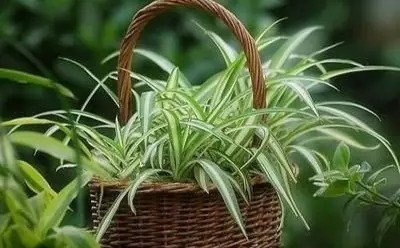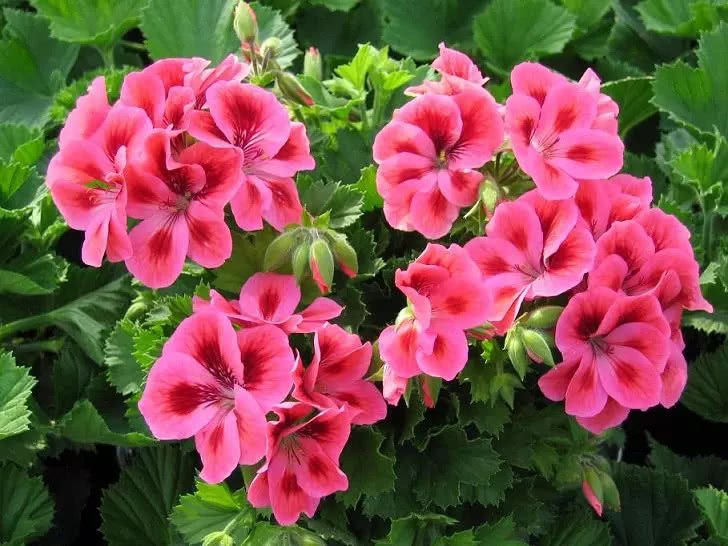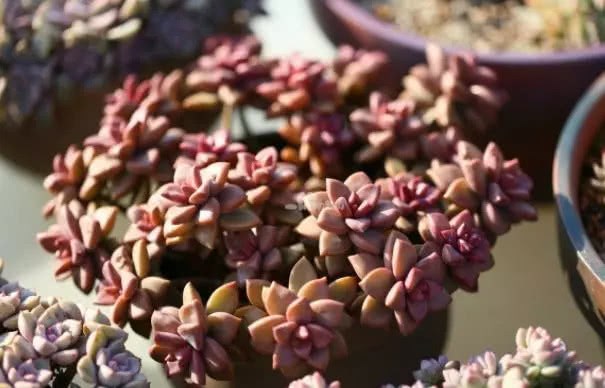The hanging orchid always wilts and does not grow long. This is the original problem.

Hanging orchid this kind of plant, concise and elegant without losing chic and generous, is very suitable for indoor potted plants planted at home.
And the leaf of hanging orchid is evergreen all the year round, whether it is hanging in front of the window or on the balcony, it can make people feel comfortable and comfortable.
The slender leaves of the orchid can also absorb harmful gases and effectively purify the air, bringing a pleasant environment to the whole family and beneficial to human health.
However, many people have responded that after raising hanging orchids for a period of time, there will always be yellow and withered leaves, or even black zoom at the top of the leaves. Why on earth is this, and how should it be solved?
Reason 1: the area of the basin is too small
Because the growth rate of the orchid is relatively fast, so in the process of cultivating the orchid, it is necessary to change the basin regularly according to its growth situation to create more space for its growth.
If you do not change the basin for a long time, it is easy to cause the root system to be confined in a narrow space and not to stretch, and the growth of the leaves will certainly not be exuberant.
Solution: in this way, the basin must be changed. Take the orchid out of the old basin, cut off the rotten roots and dead branches and leaves, and then change it to a large basin for culture. After changing the basin, put the orchid in a cool and ventilated place and wait for the slow basin to recover.
Reason two: the temperature is too high and the sun is too strong.
Especially in summer, the temperature is too high, the air is muggy, if you do not pay attention to shade, maintain ventilation, it is likely to cause the leaves of Cymbidium to appear burning yellow, leaf tip withered yellow decline.
Solution: immediately move the orchid to a cool environment and cut off the withered and yellow leaves to enhance ventilation. Water can be sprayed on the surface of the blade to speed up the recovery of the orchid.
Reason 3: root rot
There are many causes of root rot, either because the soil is too hardened or because it is overwatered. The root system of the plant is rotten and can no longer absorb water and nutrients from the soil, which can easily lead to leaf withering.
Solution: immediately remove the whole orchid from the flowerpot, clean up the soil above, trim off the festering part, and then plant it in sandy soil. Don't irrigate too much water during cultivation until the new roots grow.
Pre-prevention
1. Keep the environment moist
As the leaves of the orchid are more, and luxuriant, so it needs more water, so we should not only pay attention to grasp the amount of water to ensure the soil moist inside the flowerpot, but also often wipe the leaves of the orchid with a damp cloth to wipe off the dust on the surface to keep it fresh.
In addition, you can often spray some water into the air around the orchid to play the role of moisturizing.
2. Summer shade
Although the hanging orchid is accustomed to the light environment, but avoid strong direct sunlight, do not let it receive strong light in summer, so as to avoid burns on the leaf surface.
3. Change the basin regularly
Hanging orchids should still be matched with flowerpots that match their size. if the pots are too small, it is easy to limit their growth and hinder their extension and development. Generally speaking, it is best to change the basin in the spring and autumn season, replacing the small basin with a larger one.
If you also like growing flowers, follow us!
- Prev

Take an inventory of these long and well-fed florets, there is always one that suits you.
Flower friends often ask which flowers are good to feed. Today, the editor will take an inventory of these flowers that are good to feed and bloom for a long time for flower friends to choose from. Come and have a look at the bright colors and full patterns of geraniums.
- Next

It is appropriate to choose these kinds of succulent plants for raising succulent plants in September. If you raise them casually, you will burst the pot.
Ji Yueyue is easy to raise in succulent plants. Its peak growth period is in the spring and autumn, and its reproduction is very rapid. Ji Meiyue likes a sunny, warm and dry environment. When there is sufficient light, the leaves will turn brown and pink. ...
Related
- Wuhan Hospital Iron Tree Blooming Result Was Instantly Frightened by the Gardener Master
- Which variety of camellia is the most fragrant and best? Which one do you like best?
- What is the small blue coat, the breeding methods and matters needing attention of the succulent plant
- Dormancy time and maintenance management of succulent plants during dormancy
- Minas succulent how to raise, Minas succulent plant pictures
- What are the varieties of winter succulent plants
- How to raise succulent plants in twelve rolls? let's take a look at some experience of breeding twelve rolls.
- Attention should be paid to water control for succulent plants during dormant period (winter and summer)
- Watering experience of twelve rolls of succulent plants
- Techniques for fertilizing succulent plants. An article will let you know how to fertilize succulent plants.

